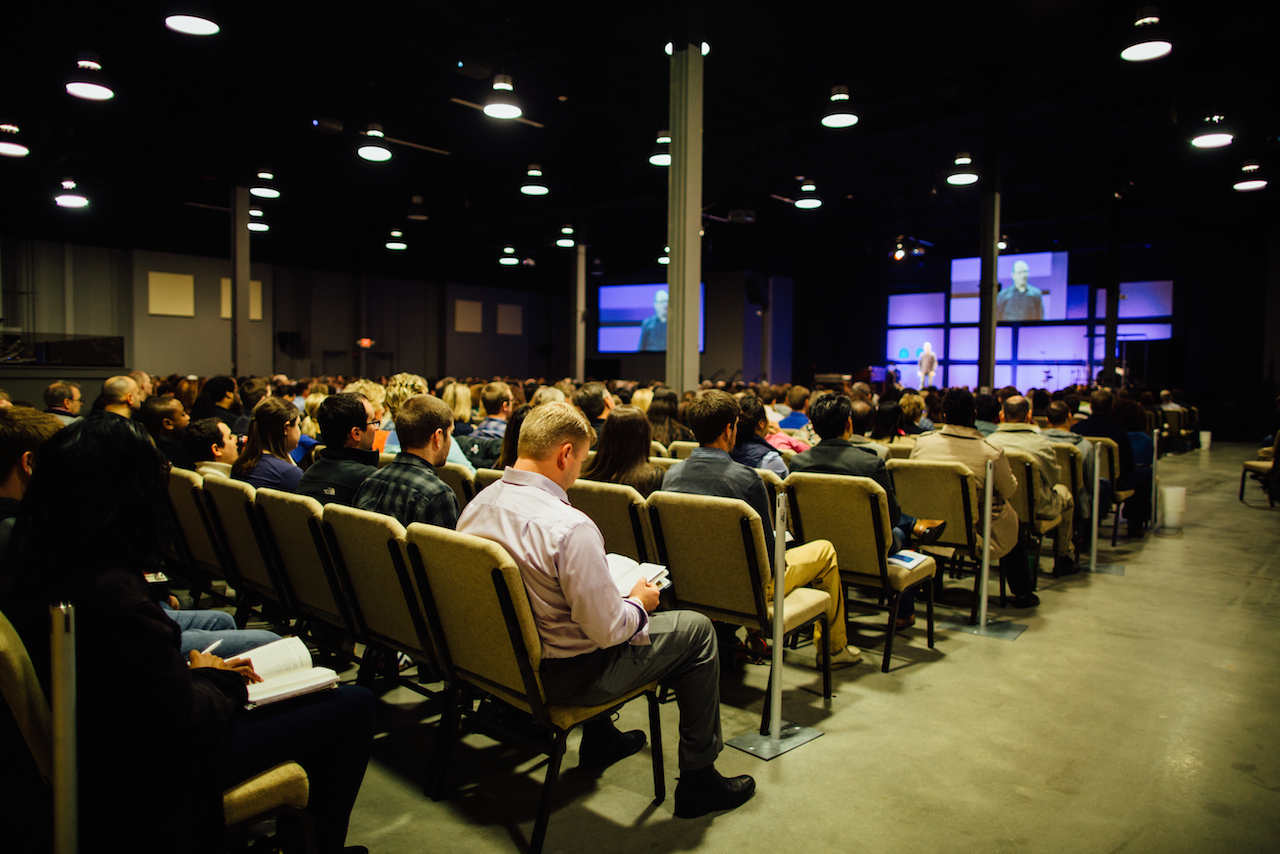How to Get People to Move Down Front

I get it: when some of you read that title, you immediately began searching for white-hot needles to stick into your eyeballs, because the thought of nerdy, dry-as-yesterday’s-toast guest services talk makes you want to weep bitter tears. If you find yourself in that category, you can watch this video of a cat getting his head stuck in a bag.
But if you constantly struggle with the “front and center” movement…if you’re facing the fall rush within the next few weeks…if you don’t want to have to parade a late-arriving guest past 500 sets of eyes to put ’em in the only open seat on the front row…then you might want to read on.
- Standard opening time.We hold the doors to the auditorium until :10 or :15 before the service, depending on the campus and the anticipated attendance. That allows the crowd to build a little bit in the lobby, and gives people more understanding as to why they need to scoot down front when they walk in.
- Well placed seaters.We try to have our Auditorium Seaters Team spread out down the main entry aisles as people are coming in. They act as a natural funnel, smiling and drawing people forward, so that progression happens. I’ve seen other churches that use a huge team of seaters, effectively blocking every row and forming a human chain, not moving until the front row is filled, then the second, and so on. As a first impressions guy, that’s very impressive to watch, but I have wondered what it feels like to the attendees on a normal basis.
- Install “hard to cross” barriers.People tend to slip behind pipe and drape or climb over a rope. We switched to a pipe system at one of our campuses that utilizes a three foot high upright pipe, connected by an 8 foot metal crossbar support. In other words, that bar hits right at waist level, making it almost too low to climb under and almost too high to step over. Here’s a “Danny Recommends” post on what we use, and you can see an example at our vendor’s website: upright || support || base
- Strategic backup plan.You and I both know that everyone will figure out a way to sit where they want to sit, whether they just outright move the metal bars, sweet talk their way past a greeter, whatever. And yes, there are people who have a legitimate need to sit towards the back. We finally decided that we couldn’t beat ’em, so we’d join ’em. In the back of each of our sections, we leave 3-5 rows wide open. That gives people the option of grabbing the back seat, and still leaves the middle seats blocked by barriers, which we open as needed as the service fills. The point is, we give them what they want, while still maintaining overall control over where exactly they sit.
- Make sure leadership knows the win. If they lead the way by sitting up front, others are likely to as well. We’ll even talk about this from time to time when it’s a non-weekend service – a time when it’s just “family,” so to speak.
- Talk about it from the stage. We’ll frequently build in the “scoot front and center” line into something that’s said from the front. We don’t do it incredibly often, but during peak attendance times we go into the weekend with that plan. Usually the worship leader knows that there will be two key times (very beginning of the service and about 12 minutes in) that he or she needs to make that announcement.
What’s #7? Are there any particular tips that have worked for you? Comment below.

3 Responses
[…] 2. Utilize non-people tools. Ropes, stanchions, reserved signs (keep them nice!), and piping systems can be your friends. Used appropriately, they serve as a subtle signal that certain sections are closed until the size of the crowd demands you open them. [Related post: How to Get People to Move Down Front] […]
[…] How to Get People to Move Down Front […]
[…] Provide parents spaces. Even though we have crowd control bars to encourage people to scoot down front, we leave 3-5 rows open in the back. While anyone can sit here, we intend the space for […]